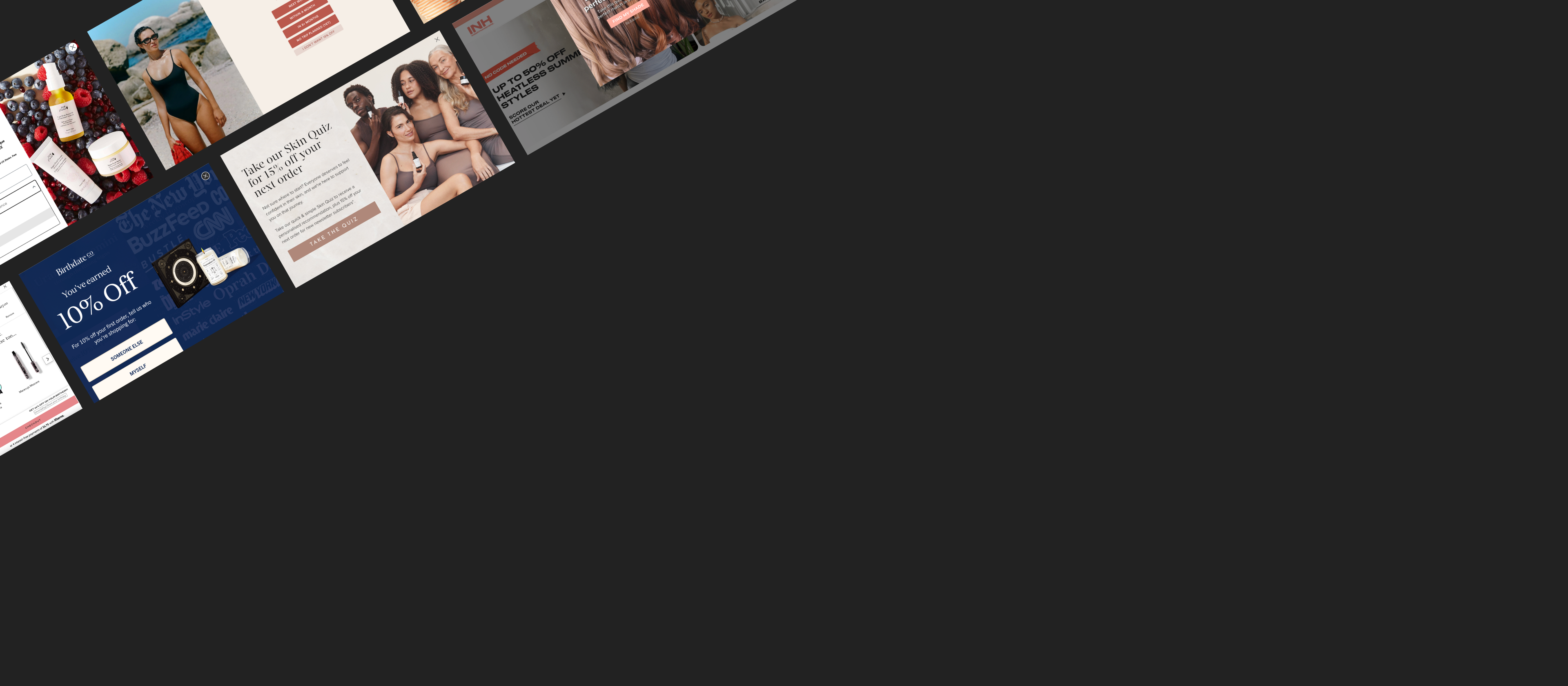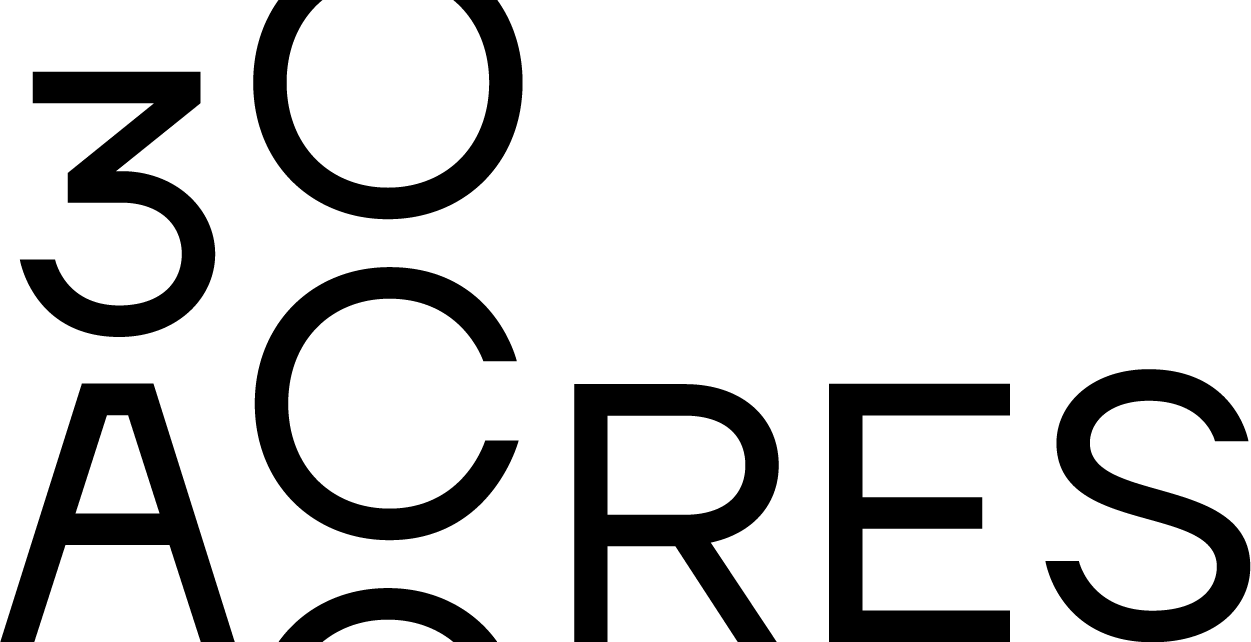
From Pop-Up to Powerhouse
How smart Sign-Up Forms Drive Flows, Segmentation & Growth Beyond Q4. Too often treated as a one-time discount pop-up, they’re actually a powerful tool for driving long-term engagement and growth.
When done right, your sign-up forms become a zero-party data engine, fueling segmentation, flows, and personalisation across your entire lifecycle marketing. That means smarter emails, better SMS targeting, and campaigns that convert with precision.
Most brands wait until November to panic-segment their list for BFCM. By then? It’s too late.
Data capture starts long before the sale, and your forms are the front line.
Think beyond discounts
Why Your Form Should Do More Than Offer 10% Off
Most pop-ups focus solely on acquisition. But top brands use them to collect data that powers:
-
Welcome flow personalisation
-
Abandonment & replenishment logic
-
Product recommendations
-
Gifting segments for holiday campaigns
→ Example: “The Nue Co.” – Starts form with “I want to feel more...” to segment by wellness goals
What is zero-party data?
It’s data your customers freely give you.
Not tracked. Not inferred.
They tell you directly: what they want, who they’re shopping for, what they care about.
Examples:
-
“What kind of cat do you have?”
-
“What’s your biggest skincare concern?”
-
“Who are you shopping for?”
-
“What’s your wellness goal?”
→ This info fuels everything from dynamic content blocks to personalised subject lines.
Real Result:
A client added one question to their form (“What are you trying to solve?”) and saw a 22% lift in Welcome Flow CTR.
What to ask (without killing conversions)
The golden rule: 1–2 high-impact questions. That’s it.
Ask only what you’ll actually use. And make it feel helpful, not intrusive.
Sample by Industry:
-
Beauty: “What’s your #1 concern?” (e.g., dryness, acne, ageing)
-
Wellness: “What do you want help with?” (e.g., hormones, sleep, energy)
-
Gifting: “Who are you shopping for?” (e.g., self, partner, daughter)
-
Pets: “What kind of cat do you have?” (e.g., senior, anxious, kitten)
→ Example: “Three Ships Beauty” – Segments by top concern at opt-in.
Incentives that actually build value
Discounts are easy. But they aren’t your only option.
Alternative incentives:
-
Entry into a giveaway
-
Early access to holiday launches
- Personalised product matches
- First dibs on limited bundles
Sign-Up form formats that drive data & conversion
High-performing strategies, pop-ups, quizzes, and embedded forms, with real-world examples
Great forms don’t just collect emails. They help customers self-identify and give you the data to personalise flows, campaigns, and product recommendations. Below are the most effective sign-up formats used by ecommerce brands to fuel long-term growth.
1. Welcome pop-ups
Goal: Capture emails and 1 key personalisation data point.
Ask a single helpful question to make the experience feel tailored from the start.
Prompts that work:
-
“What’s your top skin concern?” – for skincare brands
- “I want to feel more…” – for wellness and mood-based segmentation
Example from Andie Swim

Example from 100percentpure

2. Gifting/Intent pop-ups
Goal: Segment gift-givers vs self-buyers
Distinguish who the shopper is buying for early—this unlocks gifting flows and recipient-specific product recommendations.
Prompt example:
-
“Who are you shopping for?” (e.g. Myself, Wife, Daughter)
Example from Mori

Example from Birthdate Co

3. Exit-Intent pop-ups
Goal: Capture bounce traffic + overcome objections
Trigger when a user tries to leave—ask a question or offer helpful content instead of pushing a sale.
Prompt example:
-
“Not ready to buy? Tell us about your cat and get tailored tips.”
- “Before you go, who are you shopping for?”
Example from Furbo Nanny

4. Quizzed & embedded forms
Goal: Use on-site quizzes or forms as your main way to collect leads and zero-party data
Instead of a pop-up, some brands use full-page quizzes or interactive forms right on their homepage, product pages, or a dedicated landing page. These experiences guide shoppers while capturing key info to personalise emails and SMS.
Examples of prompts:
- “Find your perfect fit in 30 seconds”
- “Tell us your hair goals for personalised recommendations”
Example from Mukti

Example from INH

Bonus: In-cart data capture
Goal: Collect valuable zero-party data without disrupting the shopping flow
Forms don’t always need to live in pop-ups. Smart brands embed simple data capture directly in the cart—when shoppers are already engaged and motivated to complete their purchase.
Example:
A beauty brand invites customers to “Get 20% off on your birthday” with a field to enter their birthdate right in the cart sidebar.
Why it works:
-
Feels like a value-add, not a form
-
Captures data at a high-intent moment
-
Enables birthday flows and personalised offers later
-
Doesn’t rely on pop-ups or modals
→ Tip: This works beautifully for birthdays, gifting insights, product usage preferences, or even loyalty opt-ins.

5. Post-Purchase surveys
Goal: Learn more about your customers after they buy
Once someone places an order, it's the perfect time to ask a quick follow-up question. Why? Because they’ve already shown interest—and they’re more likely to answer.
This lets you fill in missing data (like pet type, skin concern, or gift intent) that can help you send more relevant emails later.
How brands use it:
→ Knead Cats: Asks “How many cats do you have?” after purchase to tailor future product recommendations.
→ Wild: Sends a “Customise your routine” quiz to recommend when to restock and what to try next.
You’re not just saying thanks, you’re getting smarter with every order.
6. Location-Gated or Pre-Launch Forms
Goal: Capture interest from regions where you're not yet shipping (or pre-launch audiences).
This type of form is perfect for brands expanding internationally or managing regional rollouts. It helps you build early demand and create segmented lists by location, before you’re even live.
Example prompt:
“Where are you located?” → Used by beverage and DTC brands when global shipping isn’t yet available.
→ Inspired by brands like Heaps Normal and others launching into new markets

How to use the data
What happens after they click "Submit" matters even more.
Top ways to use zero-party data:
-
Personalised product blocks in welcome & cart flows
-
Triggered gift guides or replenishment sequences
-
Segmented campaigns by pet type, skin concern, etc.
-
Auto-tag profiles to power email & SMS logic
Data Hygiene Tip:
Store responses as custom properties (Klaviyo) or quiz tags (Yotpo). Keep it clean and actionable.
Final thoughts
Smart brands start now
-
Don’t wait for Q4.
-
Don’t panic-segment in November.
-
Don’t waste your best traffic moments.
Let your sign-up forms work harder, so your email and SMS can work smarter.
Next steps
- Audit your current form setup
- Add 1 intent-based question
- Match form type to your brand goals
- Map the data to your ESP for segmentation
Want to do more than just capture emails?
If you're planning for Q4 and beyond, now’s the time to get your list, flows, and segmentation strategy in shape. Whether it's upgrading your forms, building zero-party data into automations, or setting up smarter journeys, we can help.
Book a free audit session with our team.




Leave a comment
This site is protected by hCaptcha and the hCaptcha Privacy Policy and Terms of Service apply.